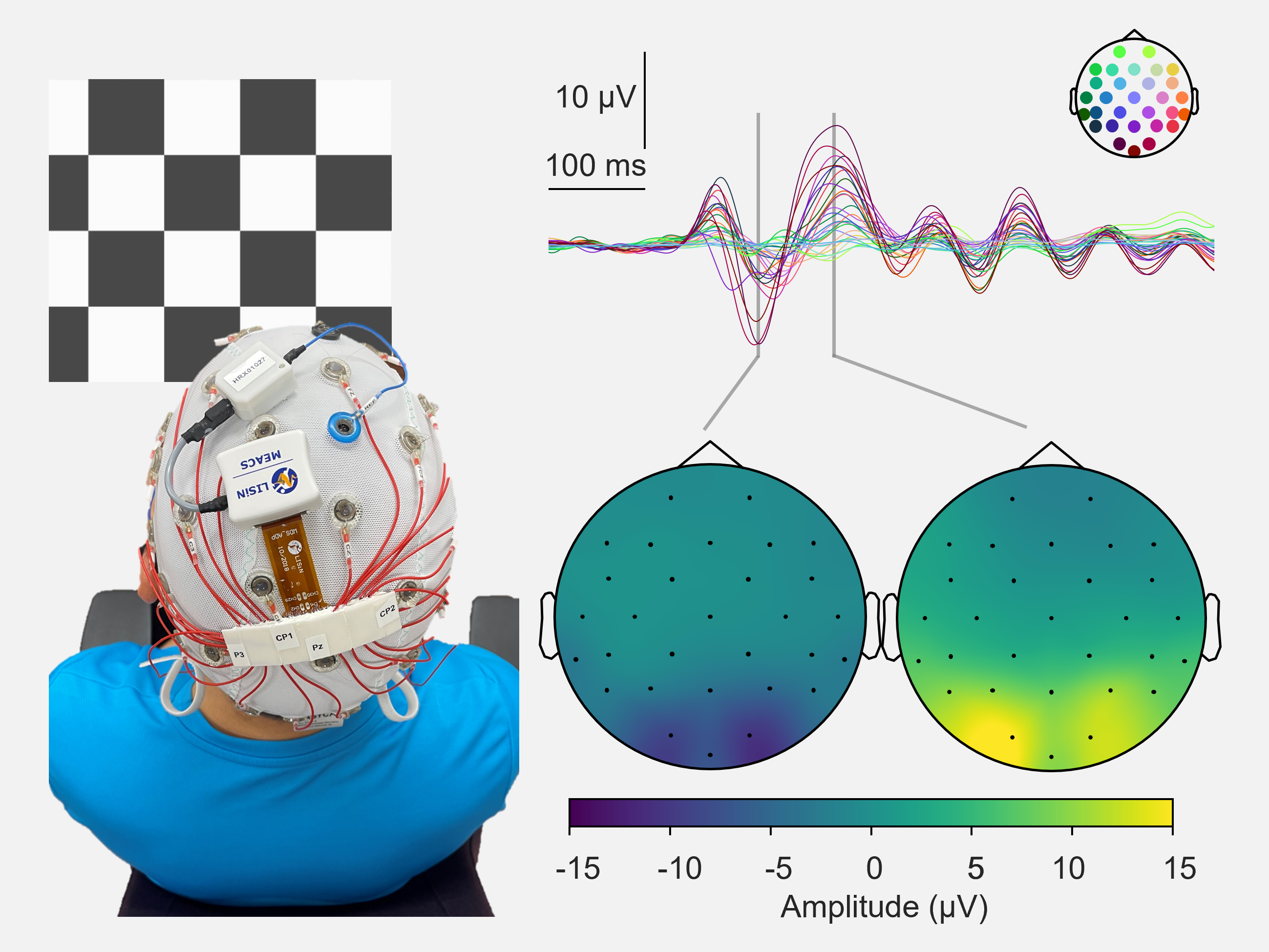Dynamic EEG
Applications of ReC Bioengineering devices in the field of dynamic EEG acquisitions

Acquiring EEG signals during movement presents major challenges, primarily due to motion artifacts that compromise signal quality. MEACS advanced wearable and wireless systems technology in this field, enabling the acquisition of synchronized EEG and HD-sEMG recording during activities like walking, running etc. MEACS enhances portability and ecological recordings without compromising signal quality.
These innovations facilitate broader applications. For example, MEACS can be used to concurrently acquire EEG and HD-sEMG signals for studying sensorimotor processes, task-specific cortical activation during voluntary movement and postural control.
The combination of thoughtful hardware design and artifact mitigation strategies allows for robust brain-muscle analysis in natural settings. These strides support applications in rehabilitation, sports science, and human-machine interfacing.
Bibliography from the LISiN-ReC group
[1] G. L. Cerone, A. Giangrande, M. Ghislieri, M. Gazzoni, H. Piitulainen, and A. Botter, “Design and Validation of a Wireless Body Sensor Network for Integrated EEG and HD-sEMG Acquisitions,” IEEE Trans. Neural Syst. Rehabil. Eng., vol. 30, pp. 61–71, 2022.
[2] A. Giangrande, A. Botter, H. Piitulainen,G. L. Cerone. “Motion Artifacts in Dynamic EEG Recordings: Experimental Observations, Electrical Modelling, and Design Considerations”. Sensors (Basel). 2024 Sep 30;24(19):6363. doi: 10.3390/s24196363. PMID: 39409399; PMCID: PMC11479364.
[3] A. Giangrande, G. L. Cerone, A. Botter, and H. Piitulainen. “Volitional muscle activation intensifies neuronal processing of proprioceptive afference in the primary sensorimotor cortex: an EEG study”. Journal of Neurophysiology, 31: 28–37, 2024. doi: 10.1109/TNSRE.2022.3140220
[4] A. Giangrande, T. Mujunen, G. L. Cerone, A. Botter, H. Piitulainen, “Maintained volitional activation of the muscle alters the cortical processing of proprioceptive afference from the ankle joint”, Neuroscience, Volume 560, 2024, Pages 314-325, ISSN 0306-4522, https://doi.org/10.1016/j.neuroscience.2024.09.049.